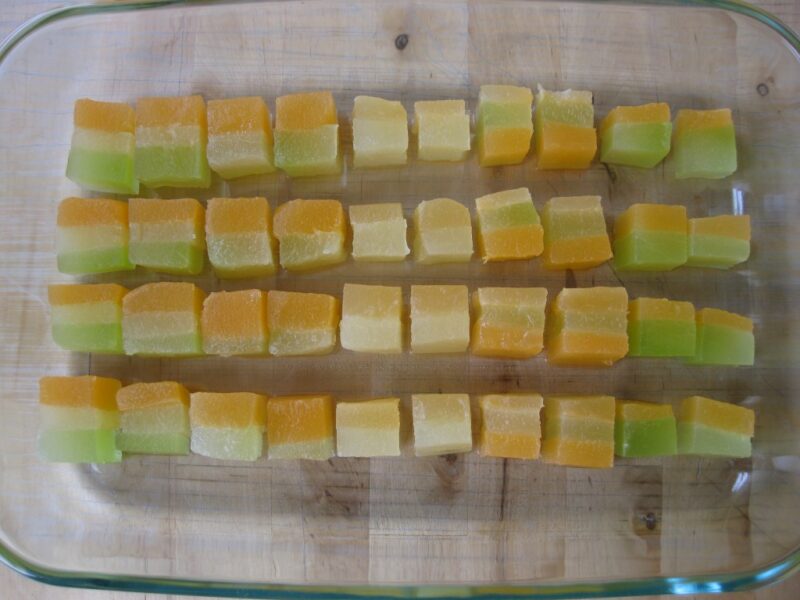Fruit glue is an interesting technique that melds different fruits together using low methoxyl pectin and calcium. Fruits are infused with a calcium solution, brushed with a pectin solution, and then compressed together in a vacuum sealer. Low methoxyl pectin gels in the presence of calcium ions, gluing the fruit together.
Melons used in today’s experiment, from top to bottom, left to right: honeydew, galia, hami, orange flesh honeydew, cantaloupe and sharlyn. The galia (green flesh, tastes like cantaloupe) and orange flesh honeydew (orange flesh, tastes like honeydew) taste the opposite of their appearance, so you can have fun and surprise people with unexpected color/flavor combinations.
Pomonas Universal Pectin is a low methoxyl pectin that conveniently comes packaged with monocalcium phosphate, saving you from buying calcium separately. I only used calcium lactate gluconate because I already had it on hand; I presume monocalcium phosphate and calcium lactate gluconate are both equally effective and tasteless.
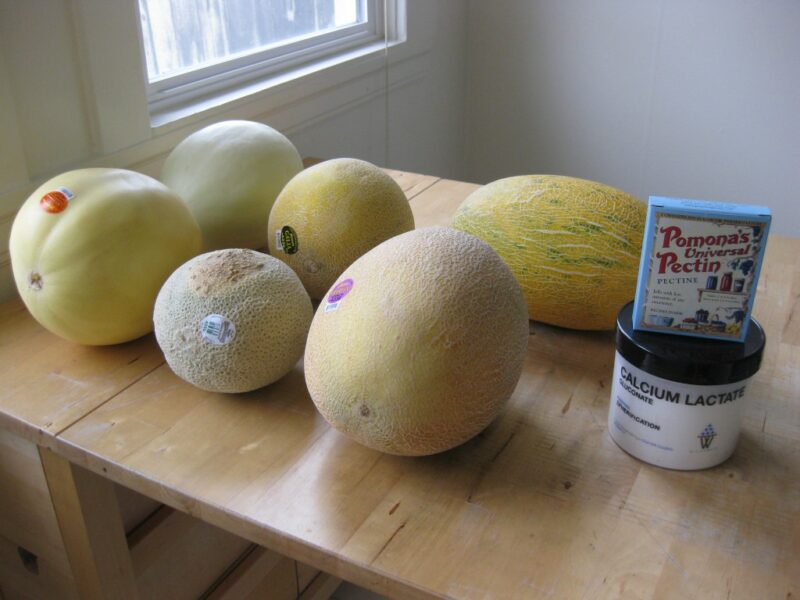
The first step is to peel the melons. From top to bottom, left to right: cantaloupe, orange flesh honeydew, hami, honeydew, galia, sharlyn. The melons will be arranged in this configuration for the rest of the series.

Next, cut the melon into flat, rectangular planks about 1cm thick. I had an extraordinarily hard time cutting uniform, flat, rectangular planks from a round, hollow melon filled with seeds. I had a terrible yield and blended the unused, misshapen parts into juice.
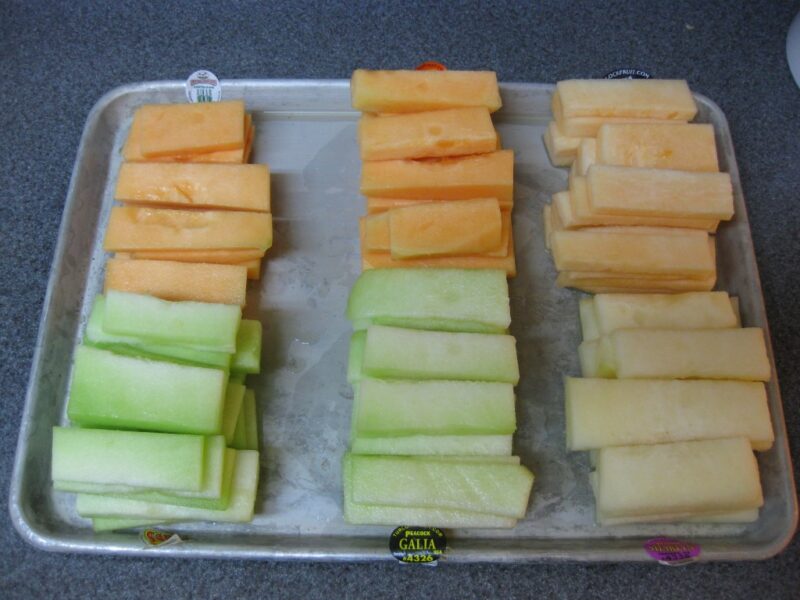
Weigh the melon planks. Following Modernist Cuisine‘s compressed melon terrine recipe, pour water equal to 0.74x the weight of the melons into a bowl. Dissolve an amount of calcium equal to 0.005x the weight of the water into the water (0.5% calcium solution). Vacuum seal the melon planks with the water. Modernist cuisine says to rest the vacuum sealed planks for 20 minutes, but I let them rest in the refrigerator overnight because it was too late for me to continue at the end of the day.
Compressing a melon intensifies the color and changes the texture, just like it did for compressed watermelon sashimi
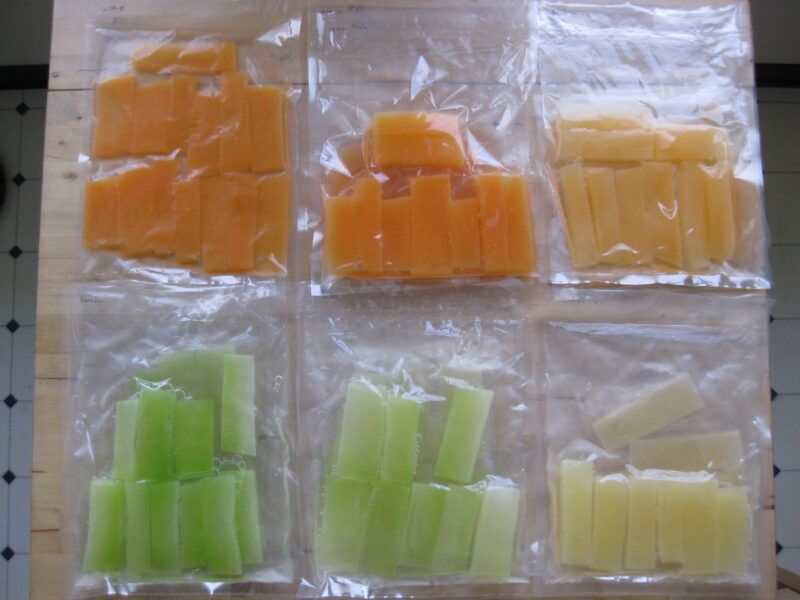
Next, make the pectin solution. Modernist cuisine calls for an amount of water equal to 0.74x the weight of the melons, but this was way too much in my experience. You could probably safely get away with 0.25x the weight of the melons. Then add an amount of pectin equal to 0.003x the weight of the water to the water (0.3% pectin solution). Bring the water to a boil and shear with an immersion blender to fully hydrate the pectin. Let the pectin solution cool back down to room temperature. Unseal the planks and pat them dry. Brush one side of the melon with pectin, then combine with another plank into a plank-pectin-plank sandwich.
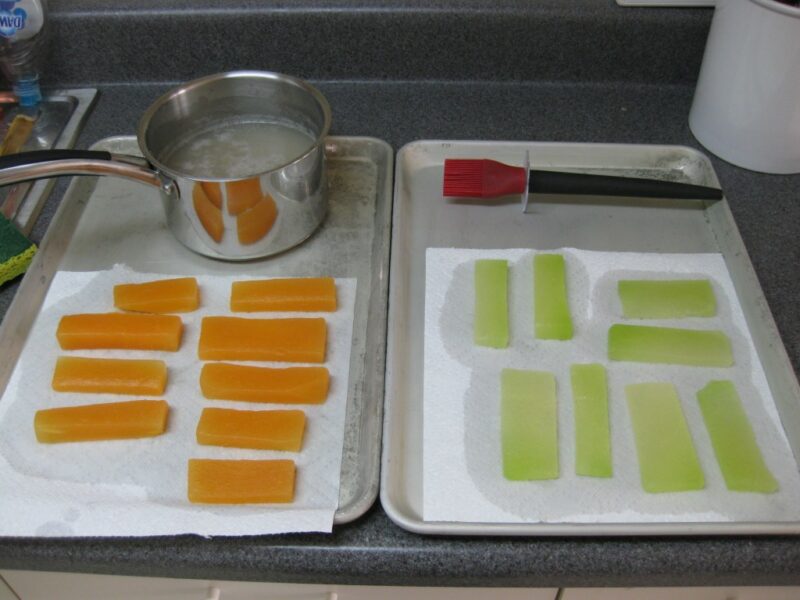
Vacuum seal the melon sandwiches and let them sit in the refrigerator overnight so the pectin can gel.
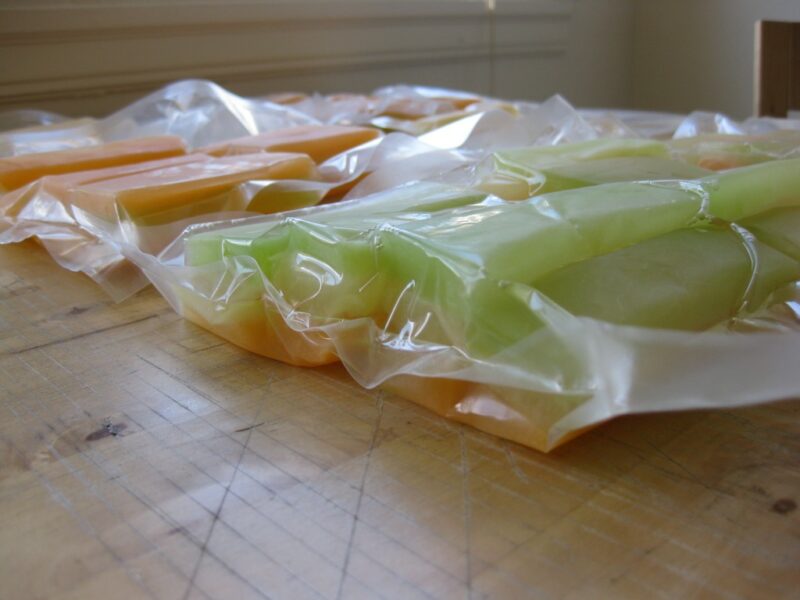
The next day, open the bags and cut the planks into nice, uniformly sized pieces. The pectin adhesive is not very strong, so you need to be careful to avoid separating the planks when cutting. My yield took another huge hit at this step because a lot of my planks separated. Below is a honeydew-sharlyn-orange flesh combination, looking like the flags of Ireland, India, or Niger. If I had red watermelon, I could have made the flags of Bulgaria, Hungary, Iran, Italy, or Mexico.
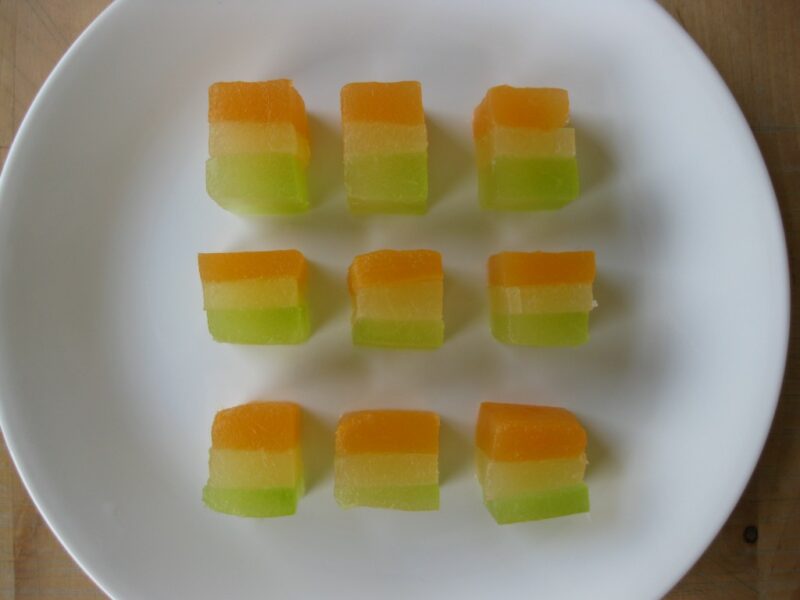
Cantaloupe-honeydew
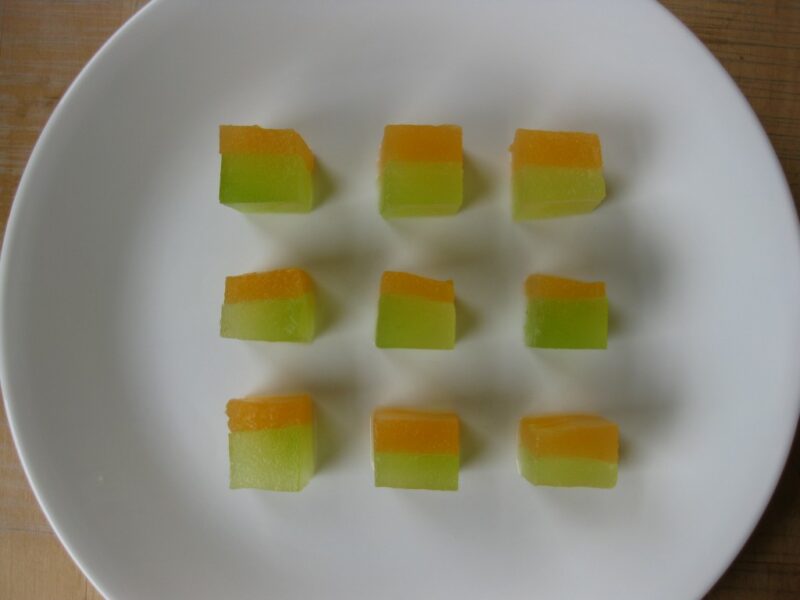
Galia-orange flesh honeydew, in the same flavor orientation as cantaloupe-honeydew above but with the color polarities reversed.
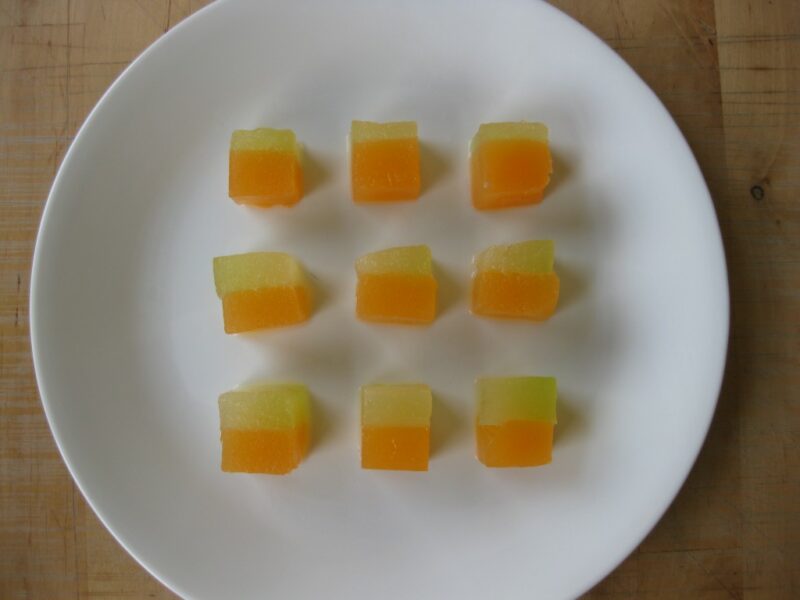
Sharlyn-hami
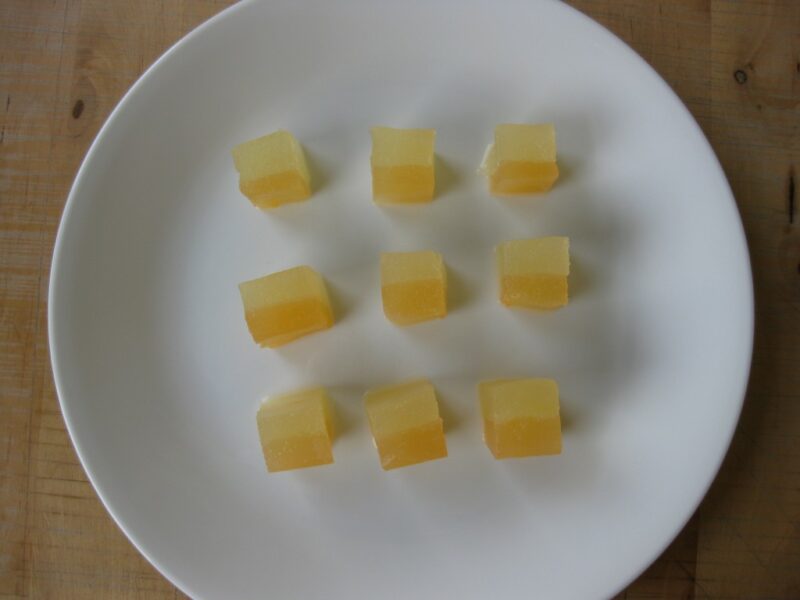
Hami-galia-cantaloupe
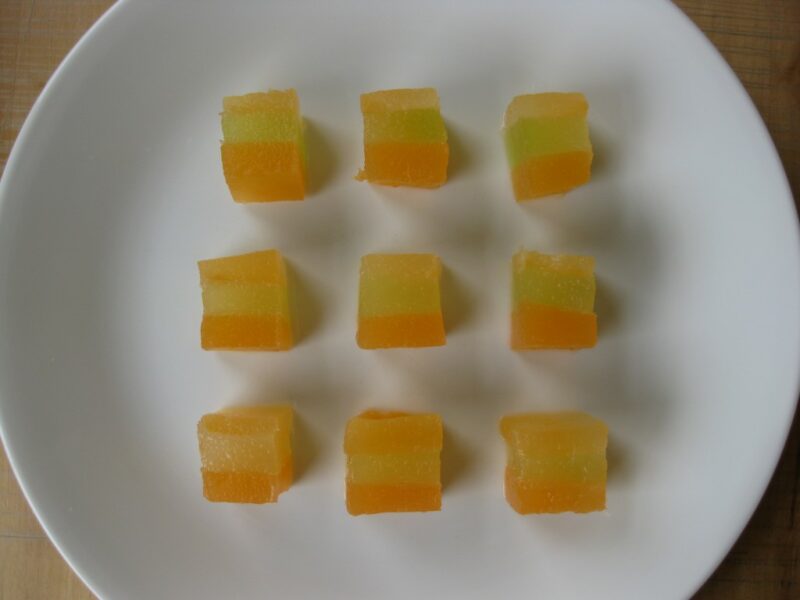
All together. It took 6 whole melons to make this tiny amount and the pieces aren’t even perfectly uniform! My yield on this first attempt was incredibly low and I will have to improve my slicing technique if I want to make uniform pieces. However, I am satisfied with the result – the intense colors make for a great presentation and there other fruits to try gelling together next.
